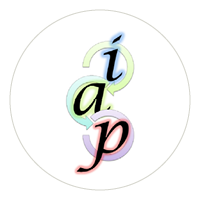Yves Tondeur
TBA
- Conference: Emissions Monitoring Conference
- Presentation: Measuring low concentrations of PCDD/Fs (TEQ) in the USA
- Presentation Time: Day1 12:45


Dr. Tondeur witnessed the emergence of the environmental testing market in the late seventies and
during the eighties, and experienced firsthand the industry difficult maturation phase throughout the
nineties. By the end of the last millennium, along with his business partner Jerry Hart, Ph.D., he started a
new laboratory (Analytical Perspectives) with a focus on fitness for purpose and working on answering
the following question: How do we continuously improve our products/service quality and underlying
science, as well as operational/financial performances considering the quality status quo preserved by
how the methods were originally written and enforced?
Dr. Tondeur graduated from the Free University of Brussels, Belgium with a Ph.D. in Chemistry (Physical
Organic Chemistry). In early February 1979, he started post-doctoral research work in the field of
analytical organic mass spectrometry at Florida State University where he studied the applications of
negative chemical ionization mass spectrometry to trace analyses of chlorinated aromatic compounds
such as dioxins, PCBs, and pesticides/herbicides. He then joined the National Institute of Environmental
Health Sciences (NIEHS; Research Triangle Park, NC) as a Visiting Fellow for a little over two years. The
position entailed interfacing the sample preparation and mass spectrometry laboratories while
developing and optimizing analytical procedures for dioxins and flame retardants. During these three
years of post-doctoral work and the three years at the National Cancer Institute (head of the Mass
Spectrometry Laboratory at the Frederick Cancer Research Facility, MD), he developed the necessary skills
establishing the foundations for the development of USEPA Method 8290 (1984-1987) in support of the
USEPA’s Superfund Program (EMSL-Las Vegas; UNLV). During his tenure, many USEPA personnel,
including the Project Officer, were convinced that isotope-dilution high-resolution mass spectrometry for
the determination of dioxins would never succeed due to its cost and complexity. Shortly after the
submission of the first draft of Method 8290, he joined a group of former NIEHS scientists and colleagues
who had founded a commercial laboratory (Triangle Labs). He was involved in the development of the
Agency’s Method 23 (analytical aspects), promoted isotope-dilution high-resolution GC/ high-resolution
mass spectrometry for ultratrace analyses in countries such as Canada, Chile, China, EU (CEN), Japan, S.
Korea, Mexico, and Thailand. For the next two and half decades, he incessantly worked on improving
these methods, even today in retirement. He has been a member of the Source Evaluation Society since
1988, served as a member of the association’s board of directors on two separate tenures, and was the
Editor/Publisher of the SES newsletter—The Platform—from 2017-2021. He co-chaired and chaired the
SES conference in 2013 and 2014. He was inducted into the SES Hall of Fame in 2012.
Low Dioxins TEQ-Regulated Emissions? Do you need assurance that the testing results lead to effective decisions? Using actual data, a stakeholders’ fit-for-purpose approach to build confidence during decision making is discussed by addressing a fundamental question within the context of the technology-in-use and the challenges associated with measuring low concentrations of dioxins in flue gas samples.
How does one measure “quality”?
Is it by…
▪ Following the method to the letter and doing nothing to overcome sample matrix-related difficulties?
▪ Meeting arbitrary, obsolete, irrelevant, fixed and nonperformance-based “quality control” criteria?
Or is it when the…
▪ User (regulatee), the stack testing firm and the laboratory work together to stay ahead of the curve?
▪ Plant manager is satisfied with its emission found below regulatory limit and knows that there is a 5% chance that the true value is above the limit?
▪ Plant manager knows that there is a quantifiable possibility or probability that the laboratory contributed to the measured value to be above the limit?